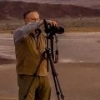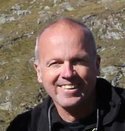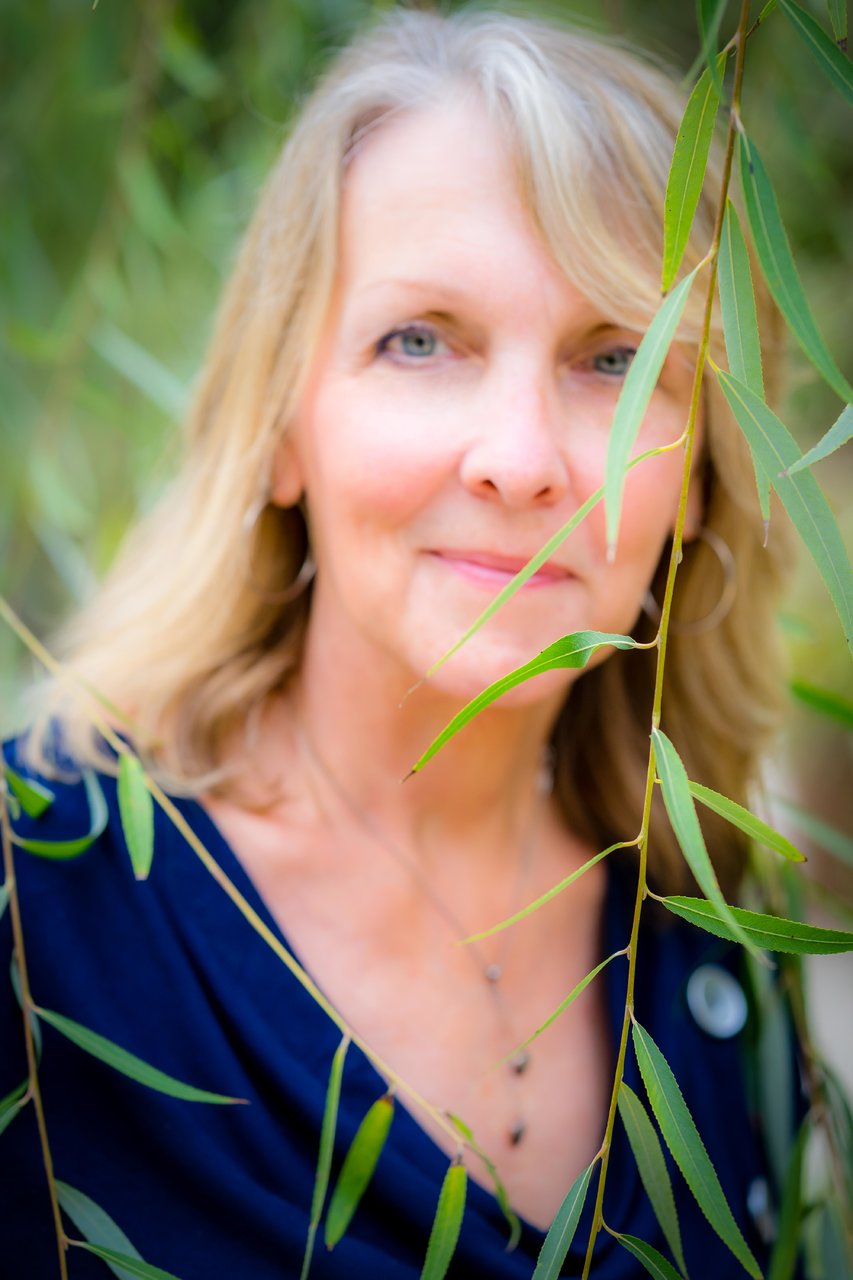-
Posts
226 -
Joined
-
Last visited
-
Days Won
9
steve of stonehenge last won the day on December 5 2019
steve of stonehenge had the most liked content!
Profile Information
-
Gender
Male
-
Location
Raleigh, NC
-
Interests
Retired military pilot. Love to travel.
steve of stonehenge's Achievements
-
 Azergoth reacted to a post in a topic:
Is FE 24mm F1.4 GM too good for an A7III ?
Azergoth reacted to a post in a topic:
Is FE 24mm F1.4 GM too good for an A7III ?
-

Is FE 24mm F1.4 GM too good for an A7III ?
steve of stonehenge replied to ICONcatcher's topic in Sony Alpha Full Frame Lenses
I feel the A7 m3 is one of the best cameras in the world right now with the A7R m4 the best. My philosophy has always been the same when buying digital camera gear (starting in 2008 with a Canon 40D): Buy the best glass you can then get a camera body with the money you have left over. Camera bodies come and go depending on technology. But good glass will last a lifetime. I will say I have replaced a few lenses as better models become available. The 24mm GM is a good example. Sony was slow to offer the native 24mm option so I got the Zeiss Batis 25mm f2 when it was offered. When the Sony 24 GM was offered about a year ago, it got stellar ratings. So this summer I sold the Batis and ordered the Sony GM. A similar situation happened with the Sony 100-400 GM. I bought a Canon 100-400 L because the Sony option was not yet available. In both cases, when I sold the older lenses, I lost a small amount. But high quality lenses (L glass for Canon and GM for Sony) will always be in demand. As for a head to head comparison between Sony A7 m3 and A7 R m4 (or m3), more MP on the sensor give better digital images, but when “developed” and converted to JPG, I don’t think there is much difference. What a high MP sensor allows you is to crop and still have enough MP remaining for a decent JPG without noise. I just returned form a vacation to Ireland. I didn’t have the Sony 24 GM yet, but my favorite image was with the Sony 24-105 lens on the A7 m2 body. I printed it on a 12 by 24 metal print and it looks fantastic. If you are wanting good advice, look at a reputable sources like Ken Rockwell. Dustin Abbott also does detailed reviews for cameras and lenses. -
 8201 reacted to a post in a topic:
Is FE 24mm F1.4 GM too good for an A7III ?
8201 reacted to a post in a topic:
Is FE 24mm F1.4 GM too good for an A7III ?
-

Good wide angle lens with eye AF
steve of stonehenge replied to Roger's topic in Sony Alpha Full Frame Lenses
You are new and may not realize it, but any auto-focus lens (even third party) that will work with the Sony E mount system (even with an adapter) will work with eye auto-focus. Native Sony lenses will work better however. The 24mm GM might be a good choice. I don’t do blogging but I believe many that do like a really wide lens like the 16-35 zoom. The 24 is faster, but the 16-35 is more versatile. All great lenses. -

Is FE 24mm F1.4 GM too good for an A7III ?
steve of stonehenge replied to ICONcatcher's topic in Sony Alpha Full Frame Lenses
I don’t own the A7iii, but my first Sony was the A7ii and I also own an A7Riii. I have several GM lenses, but the 24GM is my new favorite. I still have and use the 16-35 f2.8 GM. But the 24GM is one stop faster and much lighter. My other favorite lens is the 24-105 f4. This is the most versatile lens I own. If I had to choose only one lens, this would be the one to take. For street photography, this is the go to lens. You have to get really close for a good shot with the 24mm. The 24-105 is great for street photography. Set the ISO to auto with a range of ISO 100 to a max of 6000 and you will get some outstanding shots with minimum noise. For a very versatile and effective travel kit, for with A7iii body, 24-105 f4, and 24GM. If there are budget concerns, just get the 24–105. -
 Chrissie reacted to a post in a topic:
Hobbyist lens purchase
Chrissie reacted to a post in a topic:
Hobbyist lens purchase
-

Hobbyist lens purchase
steve of stonehenge replied to Brandonf88's topic in Sony Alpha Full Frame Lenses
I have used both Canon and Sigma lenses with a Metabones adapter on both the A7m2 and A7Rm3 bodies. Auto focus does work with an adapted lens but there is "hunting" to achieve focus. My recommendation is get the Sony 100-400 f4.5-5.6 GM. It is a really good lens. Here is a shot taken in Patagonia in March. Camera settings: Sony A7Rm3 with Sony 100-400 GM at 118mm 1/250 sec f5.6 ISO 1000. -

50mm planar vs 85mm Batis
steve of stonehenge replied to Rogue_odyssey's topic in Sony Alpha Full Frame Lenses
I don't have a portrait with the 50 f1.4, but this photo really demonstrates the bokeh. Taken at night without a flash at f1.4, 1/125 sec, ISO 5000. -

50mm planar vs 85mm Batis
steve of stonehenge replied to Rogue_odyssey's topic in Sony Alpha Full Frame Lenses
I own both of these stellar lenses and love them both. The 50 is a little faster at f1.4 versus the Batis 85 at f1.8. I get some great portraits from the Batis. If you want bokeh, the combination of f1.8 and 85mm will definitely give it to you. Here is a portrait of my friend at f2.8, ISO 200 1/400 sec. It looks soft and that is on purpose. She is 65 years old and needs the benefit of soft lighting. -
 Camo reacted to a post in a topic:
Thinking about switching to A7M3: The lens question
Camo reacted to a post in a topic:
Thinking about switching to A7M3: The lens question
-
 Boomer reacted to a post in a topic:
New to Sony Alpha - potentially
Boomer reacted to a post in a topic:
New to Sony Alpha - potentially
-

New to Sony Alpha - potentially
steve of stonehenge replied to Boomer's topic in General Discussions about Sony Alpha
I have been with Sony A7 system for over two years now so I’ll offer a few observations: The Sony A7R m3 is a superb camera. With the m4 available later this year, prices on the m3 will drop. You might want to just go ahead and buy a m3 now and move it to back-up role when the m4 is available. I suspect the m4 will be in short supply even into next year. Another possibility is the A7 m3 for backup. An excellent camera in all regards except 26MP vs 42MP for A7R m3 or 61MP for m4. When I first got into the Sony A7 system, there were not as many Sony lens options available as now. I adapted Canon EF lenses with Metabones IV adapter. Adapted lenses will work, but autofocus is slow. Just this month I have sold all my Canon lenses. Overall you will get better results with Sony E-mount lenses than anything else. The Zeiss Batis E-mount lenses work very well on Sony. Your lens ideas will work. I don’t own the 24-70GM...too heavy. I just started using the 24-105 f4 last fall and love it. For travel, it is outstanding. If I had to bet, I think the 24-70GM will be updated soon. For landscape shooting, you just can’t beat the 16-35 f2.8 GM. I used to own the f4, but the f2.8 is so much more versatile. To keep from wasting money, start slow on lenses, then add as you see what you like. You never know when a current lens will be updated. Start with the 24-105 f4 and 16-35 f2.8 GM. That will keep you busy for months. Then add the 85mm f1.8GM for portraits, and 100-400 for wildlife. Why would you spend thousands on top-of-the-line GM lenses and then put a cheap filter on the front? Yes B+W filters are expensive, but they are excellent quality. A good quality filter is not cheap. You mention a battery grip. I prefer a SmallRig L bracket instead. Early Sony A7 cameras all had small capacity batteries. All newer models have excellent battery life so you don’t need a grip with two batteries. Needless extra weight. I have had my camera out in light rain, but it is best to use a camera raincoat I believe. A PeakDesign medium works great. As for SD cards, get at least one UHS II cards for filming children, animals, and wildlife. As for flash, I just rarely use one. I just set ISO at auto up to 6000. The Sony newest sensors are great and take excellent photos even at high ISO. I do occasionally use the Godox V860II S with a rechargeable battery. You can get almost 1000 flashes on a single charge. Amazing. Sony auto focus is just amazing. The eye AF will surprise you. I just took some photos of my grandson running around kicking the soccer ball. I did high speed shooting and the camera nailed the focus. Last fall at his birthday party, I was in a “bouncing house”. He was moving, I was moving independently, and the camera was still able to nail the focus. Amazing once again. Sony authorized service did me well. The shutter on my A7m2 failed while I was on a photo expedition. I sent to the repair facility and had the camera back in about a week. I don’t think you can get better service than that. For editing, I use Lightroom/Photoshop on the laptop. When I travel, I only take an iPad Pro. I use LR Mobile and Affinity PRO for iPad. A very capable app and not expensive. Sorry for the long post, but lots to cover. Message me if you need more details. -

+-24mm lens for Alpha 7RIV wanted
steve of stonehenge replied to tomcat's topic in Sony Alpha Full Frame Lenses
I owned to Batis 25mm but sold it about a mont ago. I have ordered the Sony 24 f1.4. The Sony is widely considered the best 24mm currently available for the Sony E-mount system. It is, however, in short supply and hard to obtain. This is probably due to popularity. In the US, it is the same price as the Sony 24-105 f4, making it an expensive lens. There are a bunch of comparisons on the internet and YouTube. When I bought the Batis, it was the only choice so I just did it. Now I’m upgrading. Ken Rockwell calls the Sony 24 f1.4 the best 24mm in the world: https://kenrockwell.com/sony/lenses/24mm-f14.htm The Batis is a good choice but the Sony is a better choice. I’ll post some shots in about a month when I receive mine. I can’t wait. -
 scrane reacted to a post in a topic:
Thinking about switching to A7M3: The lens question
scrane reacted to a post in a topic:
Thinking about switching to A7M3: The lens question
-
 Thad E Ginathom reacted to a post in a topic:
A7RIII damage repair - worth it?
Thad E Ginathom reacted to a post in a topic:
A7RIII damage repair - worth it?
-

A7RIII damage repair - worth it?
steve of stonehenge replied to jjct's topic in Sony Alpha Full Frame Cameras
I read every word of the Lens Rentals story above. When I finished, I recalled a trip to the beach this June when I had been splashed with my camera in my hand. It was a very slight splash but there was visible water on the lens and a few drops on the left body. I immediately got out of the surf and dried it off. No problems later so I forgot about the incident until reading this article. So I inspected the exterior for signs of corrosion immediately after reading this article. I used to be a pilot so I knew what to look for with corrosion. No evidence...at least on the outside. The only evidence I could find on the outside was the bottom of the SmallRig L-bracket. The Allen wrench that stows on the bottom did have a very slight amount of corrosion. I don’t remember even looking there after the splash. Obviously it got some ocean water on it and I didn’t dry it off properly. So maybe I got lucky, and maybe I will have issues later. Not to worry though because I have great insurance. All my camera gear has an “all risk” policy which costs about US $100 per year. About 18 months ago, I was on a photo workshop in Yellowstone Park in Wyoming, USA. My A7 m2 shutter failed on the first day. No backup!!!??? The repair and postage was about $400 and the insurance paid readily. That camera still works great and is my backup now. Lessons learned: 1) Stay out of the ocean with a good camera. 2) Get insurance on your gear. Peace of mind and it comes in handy when accidents happen. 3) Take a backup camera on trips. Mechanical things break. BTW, another Sony shooter loaned me a replacement camera on the Yellowstone trip. He sure saved me. I would have been using my iPhone and iPad for the remainder of that trip. Ok but not what I would have wanted. Sorry for the long story, but benefit from my mistakes. -
 Chrissie reacted to a post in a topic:
Thinking about switching to A7M3: The lens question
Chrissie reacted to a post in a topic:
Thinking about switching to A7M3: The lens question
-
I got the 24-105 f4 last fall and absolutely love it. I find it particularly good for travel. Some may say f4 is too slow. I would disagree. I set the ISO to auto allowing it to go as high as 6000. With Sony’s full frame sensors, this is not a problem. I take the smallest Sony flash when I travel, but rarely use it. Some think you need a wide aperture to blur the background, but a medium telephoto at f4 (like the Sony 24-105) does a great job. This shot was taken about 30 minutes after sunset at 51mm f4 1/125 sec and ISO 500:
-
I got the 16-35 f2.8 in Nov 2017 ago replacing the f4 version. I have used it on several photo workshops. It is a great lens. Then I got the 24-105 f4 last fall. I agree with you that it is so versatile for travel. If it is used on a full frame Sony, you can set the ISO to auto up to say 6000 and still get some great shots. You may get a little noise but it is easily correct in post. The one thing about a super wide lens like the 16-35 is that you can get some really wide shots. But a great work-around is to turn the camera to the portrait position and overlap a series of photos and get really wide shots. I used to use a tripod for this but now do it hand-held. Check YouTube for some videos on the technique. Then you can stitch the photos together in post. I will say the 16-35 is a really high-quality lens. You will be pleased with the IQ. Other than the cost of the 16-35, the other negative is the weight. Not as heavy as the 100-400 but still pretty heavy.
-
The Sony 24mm f1.4 has some really good ratings. However, it is a bit expensive and in short supply. I have ordered one from Adorama but it is not expected to be in stock until mid-August. Some will say 24 is not wide enough. But you can always turn the camera to the portrait mode and take several shots and "stitch" them in software. And with a wide aperture of f1.4 you can get nice bokeh in portraits.
-
I just got the firmware update to 3.0 to work correctly. Some of the steps were not the same in my Mac as listed on the Sony instructions. What I did this time that was different is on the step that says: "Connect the device to the computer with the USB cable." Previously, I turned on the camera at this step. So this time I did not turn on until I got to the "Updater" screen. Step one is turn on the camera. The "Updater" did not load automatically, but it is located in the Resources folder. I still feel this was way too complex.







